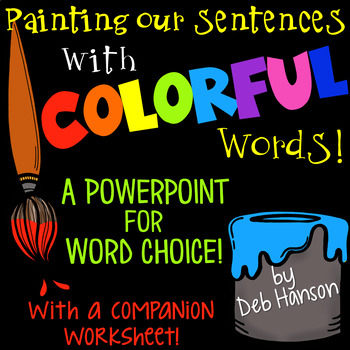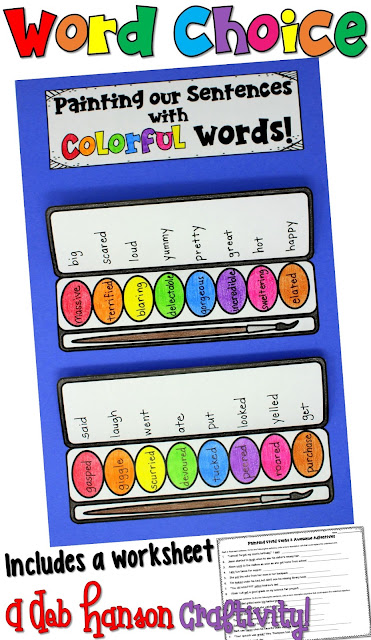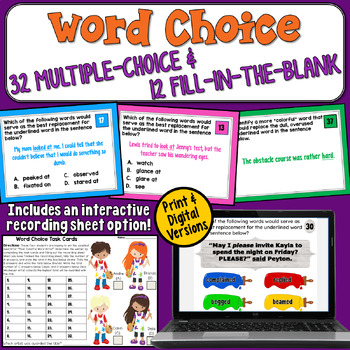It was Diego's turn for a writing conference, so I called him over to my table. Even from a distance, I could tell that the third grader took his revising job seriously, because there were red marks all over his paper. After a brief discussion, I started reading his personal narrative. In the first paragraph, he had originally written, "I'll never forget the first time I made a goal during a soccer game." However, a line had been drawn through the word made, and created was written over the top, so that it now read "I'll never forget the first time I created a goal during a soccer game."
I asked Diego what made him choose to replace the word made with created, even though I already knew the answer. He confirmed my suspicions... he had consulted a thesaurus and found this much-more interesting word!
Has this ever happened to you? As a coteaching-during-writing ESL teacher, the scene described above played out for me repeatedly. Last spring, I finally put together a few minilessons to address this topic. I actually started with an anchor chart like this:
 |
| Clip art by Krista Wallden. |
We began by talking about how important it is to use COLORFUL words when writing, and how a thesaurus helps us to reach that writing goal. That being said, you also have to PROCEED WITH CAUTION when using the thesaurus; you have to use it carefully in order for your writing to make sense.
First, I explained that you CANNOT use a "cross-out-and-plunk-in" strategy, where you cross out a boring word and then plunk in a randomly-picked-word that is listed as a synonym in the thesaurus. I then pointed to the anchor chart to provide examples: Would it make sense to replace the word look with the word watch in the first sentence? NO! Therefore, we have to carefully read through our options, one-by-one inserting each listed synonym into the sentence, and then determining which one best fits our exact meaning for this particular sentence.
From there, my students concluded that examined was the best option for this first sentence, because when you use a magnifying glass, you are usually working slowly and carefully, really studying the object, and examined seemed like the best word to reflect that mental picture. This first example also models a time when the sentence needs to be reworded slightly to sound right. In this case, we had to delete "at" in order for it to make sense.
We continued working through the anchor chart,
until it looked like this:
My students use of a thesaurus was much more "controlled" following this minilesson. :)
Feel free to check out the other related activities I created, all available in my TpT store.
First, I explained that you CANNOT use a "cross-out-and-plunk-in" strategy, where you cross out a boring word and then plunk in a randomly-picked-word that is listed as a synonym in the thesaurus. I then pointed to the anchor chart to provide examples: Would it make sense to replace the word look with the word watch in the first sentence? NO! Therefore, we have to carefully read through our options, one-by-one inserting each listed synonym into the sentence, and then determining which one best fits our exact meaning for this particular sentence.
From there, my students concluded that examined was the best option for this first sentence, because when you use a magnifying glass, you are usually working slowly and carefully, really studying the object, and examined seemed like the best word to reflect that mental picture. This first example also models a time when the sentence needs to be reworded slightly to sound right. In this case, we had to delete "at" in order for it to make sense.
We continued working through the anchor chart,
until it looked like this:
My students use of a thesaurus was much more "controlled" following this minilesson. :)
Feel free to check out the other related activities I created, all available in my TpT store.
~Deb











I just want to say thank-you! I've taught word choice revision for 10 years to my 4th graders, but not with this much pizzazz! I am excited to replace my old SmartNotebook with this PPT, which I am sure will be even more engaging for my kiddos! LOVE the very specific instruction around thesaurus use and the
ReplyDelete(oops!)... and the multitude of examples! THANKS!
ReplyDelete